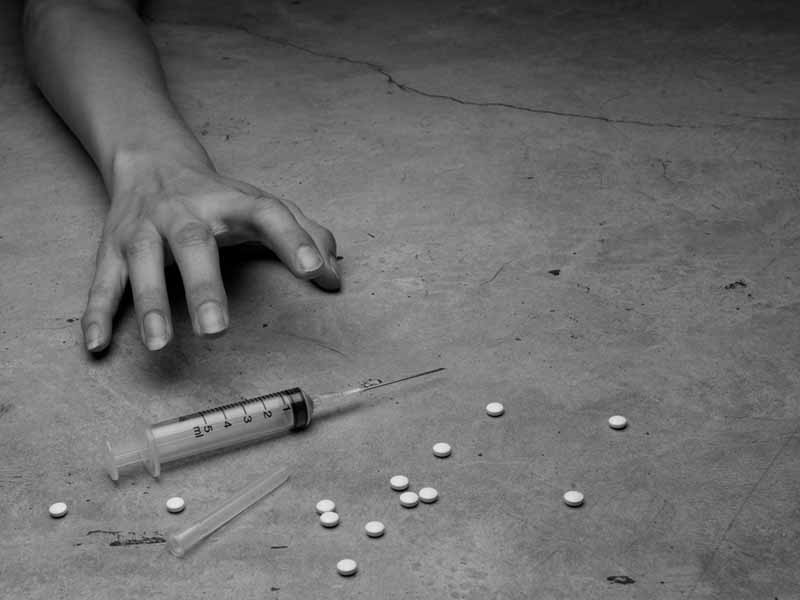USPSTF Final Recommendation
Screen Adults for Unhealthy Drug Use, Says Task Force
June 16, 2020, 02:48 pm News Staff – According to the 2018 National Survey on Drug Use and Health, more than 19% of all people ages 12 and older in the United States used an illicit drug in the past year. This percentage was marginally higher than that seen in the previous two surveys, and represents more than 53 million Americans -- an important consideration given that illicit drug use is the most common cause of preventable morbidity and death in this country.

On June 9, the U.S. Preventive Services task force posted a final recommendation statement and final evidence summary on screening for unhealthy drug use.
Based on its review of the evidence, the task force recommended that clinicians screen patients 18 and older by asking them about unhealthy drug use, and that screening should be implemented when services for accurate diagnosis, effective treatment and appropriate care can be offered or referred. This is a "B" recommendation.
The task force also concluded that there is insufficient evidence to assess the balance of benefits and harms of screening for unhealthy drug use in adolescents ages 12-17 -- an "I" recommendation.
"The physical, mental and societal effects of drug use can be grave for both individuals and families," said Karina Davidson, Ph.D., M.A.Sc., the task force's vice chair, in a news release. "The good news is that primary care clinicians can help by asking adults about their drug use and providing a connection to treatment and support for those who need it."
STORY HIGHLIGHTS
Update of Previous Recommendation
The new final recommendation statement replaces the task force's 2008 recommendation on the topic, which concluded at that time that the evidence was insufficient to assess the balance of benefits and harms associated with screening adolescents, adults and pregnant women for illicit drug use. The AAFP supported the 2008 recommendation.
To update its recommendation, the USPSTF commissioned a systematic evidence review that included 99 studies. Twenty-eight studies focused on the accuracy of drug screening instruments, while the remaining 71 trials addressed specific therapies, such as psychosocial interventions, opioid agonist therapy and naltrexone, to reduce drug use.
Thirty screening instruments were evaluated. Of those, the task force stated that several instruments detected unhealthy drug use with reasonable accuracy, including
- the Substance Use Brief Screen;
- the Tobacco, Alcohol, Prescription Medication and Other Substance Use tool;
- the Drug Abuse Screening Test; and
- a number of single-item drug frequency questions.
Although several acceptable instruments were available to screen for drug use, the task force concluded that there was no evidence on the benefits or harms of screening.
The task force also stated that compared with the 2008 review, substantially more evidence now supports the effectiveness of psychosocial interventions and FDA-approved medications in improving drug use outcomes among people with unhealthy drug use or a diagnosed drug use disorder. However, few trials evaluated psychosocial interventions among adolescents or pregnant individuals.
"We recognize the importance of addressing drug use in teens, but we need more research before we can make a recommendation for or against screening," said task force member Carol Mangione, M.D., M.S.P.H. "In the absence of this evidence, clinicians should rely on their professional judgment to determine how best to help their teen patients."
The final recommendation statement also included links to various tools and resources to assist clinicians in implementing the recommendation.
Response to Public Comment
A draft version of the recommendation statement was posted on the USPSTF website for public comment from Aug. 13 to Sept. 9, 2019.
In response to several public comments, the USPSTF added language to clarify that "screening" meant asking questions about unhealthy drug use, not testing of biological specimens such as urine or blood. The task force also clarified the term "unhealthy drug use" to describe nonmedical use of prescription drugs, illegal drugs or unregulated substances (other than alcohol or tobacco).
In response to comments that requested more information about the task force's interpretation of the evidence, the USPSTF added language in the Rationale section to clarify that screening in primary care settings for drug use can detect a range of drug use and types of drug use.
A few comments noted that screening adults may result in unintended harms such as discouraging health care screening as well as medical and sociolegal consequences associated with reporting positive screening results. The USPSTF stated that it recognizes these as potential harms and provided more details on screening implementation considerations that may address these harms.
Finally, the USPSTF clarified in the Practice Considerations section that the net benefit assessment of the recommendation does not apply to settings and populations for which treatment is not provided or the result of screening is punitive.
Related Recommendations
The USPSTF has published several recommendation statements on related topics, including
- interventions to prevent illicit drug use in children, adolescents and young adults;
- screening and behavioral counseling interventions for reducing unhealthy alcohol use in adolescents and adults;
- interventions for tobacco smoking cessation in adults, including pregnant women; and
- primary care interventions to prevent tobacco use in children and adolescents.
Up Next
The AAFP's Commission on Health of the Public and Science plans to review the USPSTF's final recommendation statement and evidence summary and will then determine the Academy's stance on the recommendation.